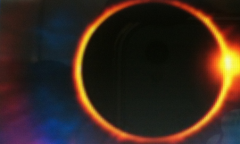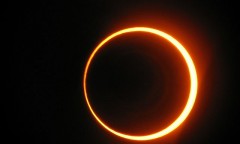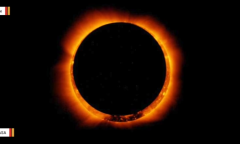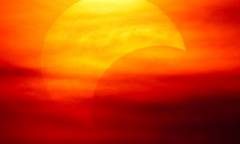By KM Diaz, | March 21, 2017

On August 21, 2017, a total solar eclipse will happen.
On August 21, 2017, a total solar eclipse will happen. Although it occurs every once or twice a year, scientists are excited and anticipating for this particular event to happen.
The sun will be covered by the moon; this August 21, North America will witness the total solar eclipse. This is the first to run from sparkling sea since 1918, and to grace the continental United States since 1979.
Like Us on Facebook
The 120-kilometer wide strip or also known as the path of totality will enter the US soil around 10:16 a.m. PST near Oregon's Depoe Bay. It will round across the state at nearly 2,700 kilometers per hour or will only pass the Beaver State for the maximum time of 10 minutes and 52 seconds. After that, it will proceed to three national parks and 12 states before it finishes in Cape Island, South Carolina at 2:49 p.m. EST.
For the past years, astronomers have been observing a lot of total solar eclipse and everyone differs from each other, according to Jay Pasachoff, an astronomer at Williams College. Pasachoff has already seen 65 solar eclipses across the world for 58 years, and the 34 were a total solar eclipse.
This August, Pasachoff will go to Salem, Oregon to observe the sun's corona and to witness a glimpse the seldom-seen solar corona to harbor secrets from the sun. This is to understand the relationship of the magnetic field of the sun and the corona.
Edward DeLuca, on the other hand, an astronomer at the Harvard-Smithsonian Center for Astrophysics, will be on a Gulfstream GV jet. DeLuca along with four research team will travel to the eclipse path above Kentucky to photograph the corona in infrared light; it has to be taken from a high-altitude observatory since the water of the atmosphere consumes a lot of infrared light.
For the citizen CATE project, about 60 identical telescopes will be set up to establish relay race of observations. This is to let the researchers analyze the sun's corona for 90 minutes. Meanwhile, the National Eclipse Ballooning Project will also send off 72 balloons to analyze the atmosphere of the Earth while there is a total solar eclipse. A staff member at the University of Montana and also part of the project, Jennifer Fowler, is curious on how the atmosphere will react when sunlight suddenly disappears.
However, it is still uncertain how many people will drive toward the path of totality, the scientists are hopeful that millions will witness this rare event.
-
Use of Coronavirus Pandemic Drones Raises Privacy Concerns: Drones Spread Fear, Local Officials Say

-
Coronavirus Hampers The Delivery Of Lockheed Martin F-35 Stealth Fighters For 2020

-
Instagram Speeds Up Plans to Add Account Memorialization Feature Due to COVID-19 Deaths

-
NASA: Perseverance Plans to Bring 'Mars Rock' to Earth in 2031

-
600 Dead And 3,000 In The Hospital as Iranians Believed Drinking High-Concentrations of Alcohol Can Cure The Coronavirus

-
600 Dead And 3,000 In The Hospital as Iranians Believed Drinking High-Concentrations of Alcohol Can Cure The Coronavirus

-
COVID-19: Doctors, Nurses Use Virtual Reality to Learn New Skills in Treating Coronavirus Patients











